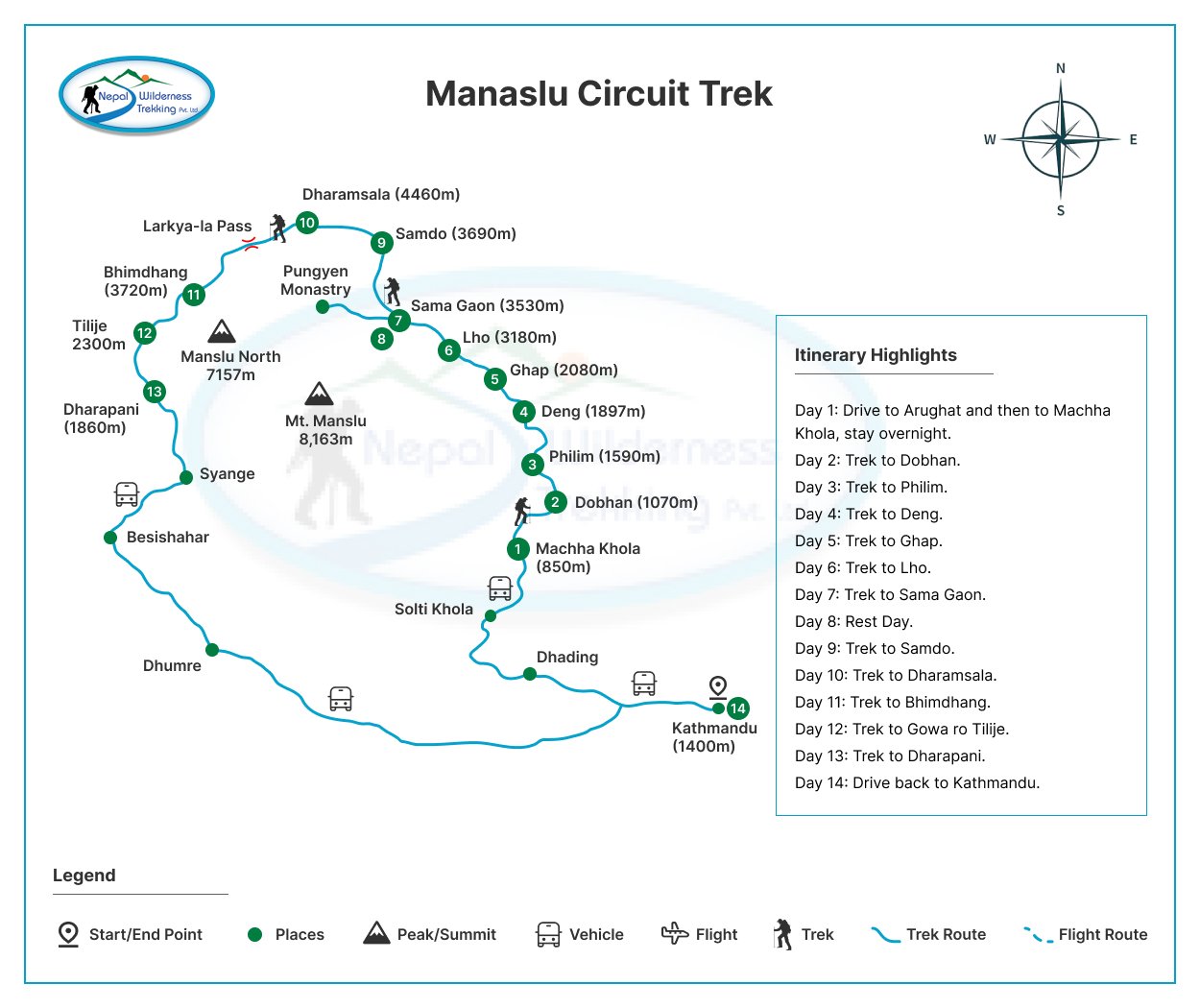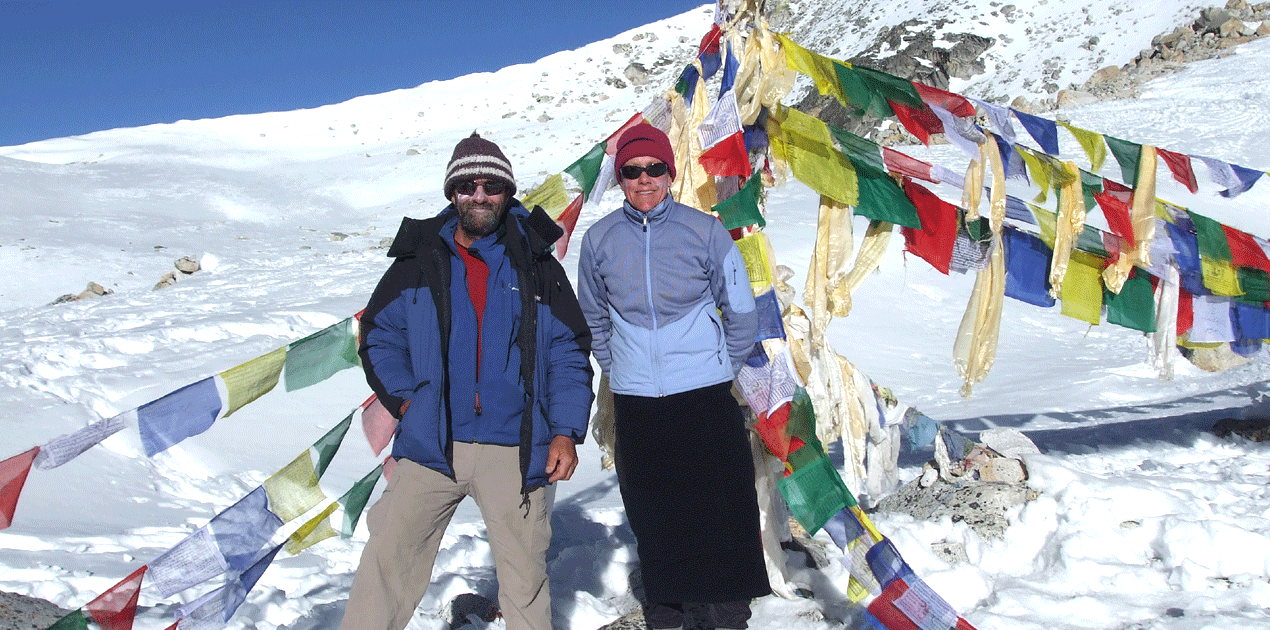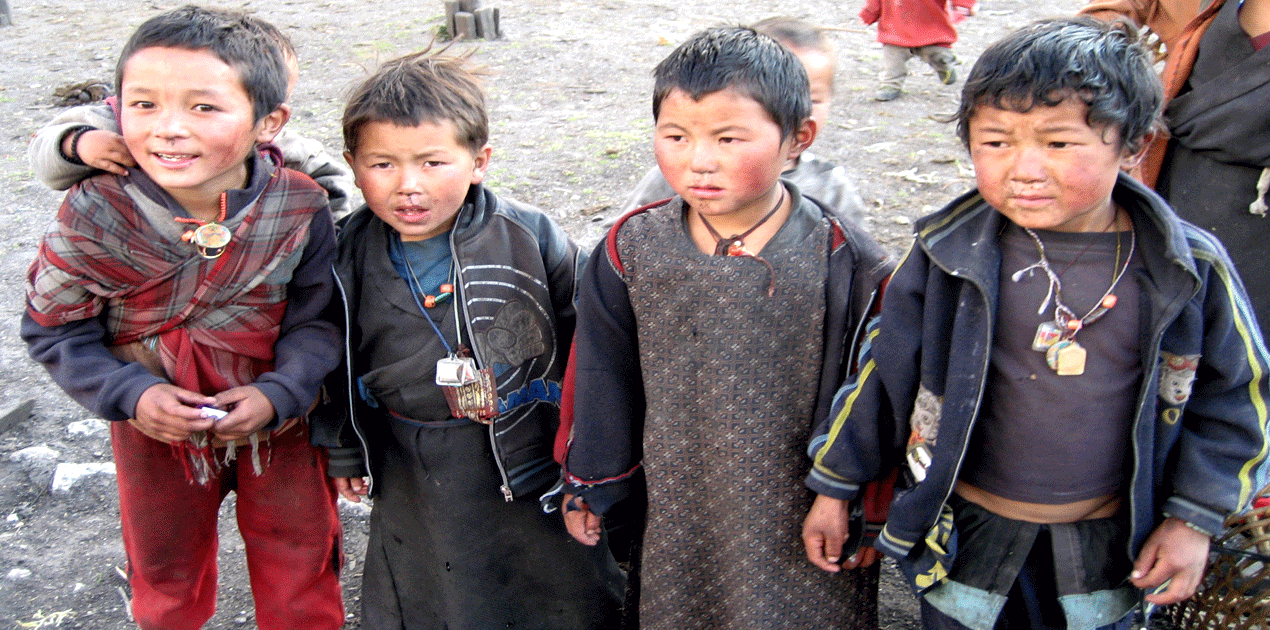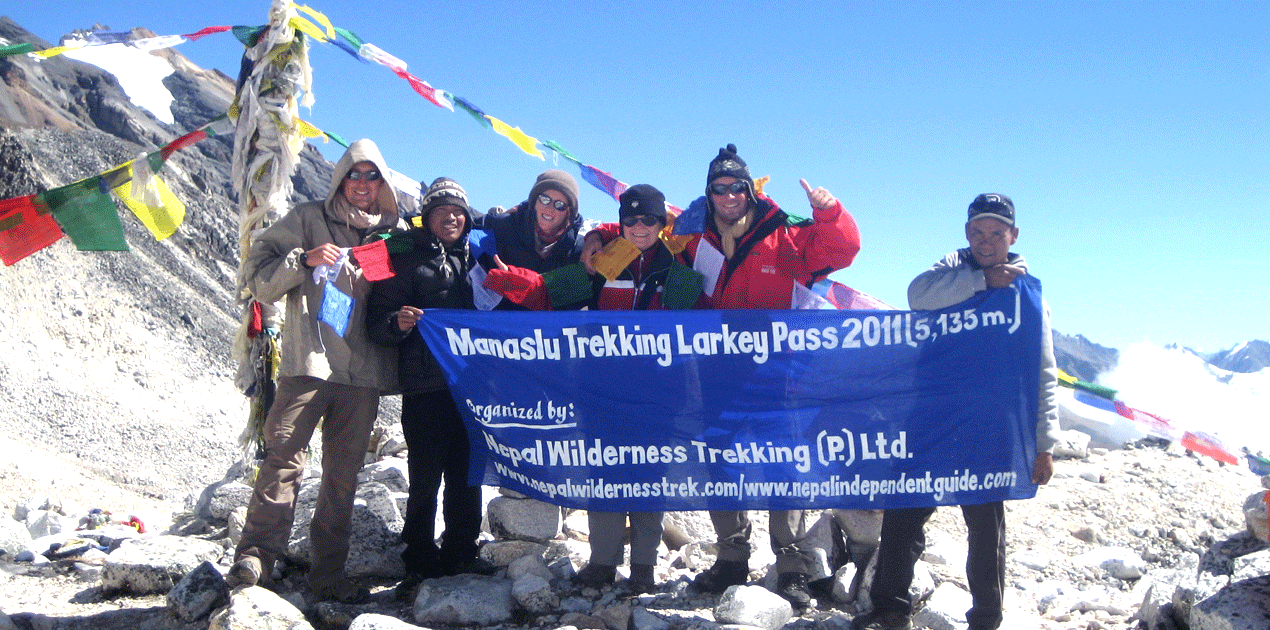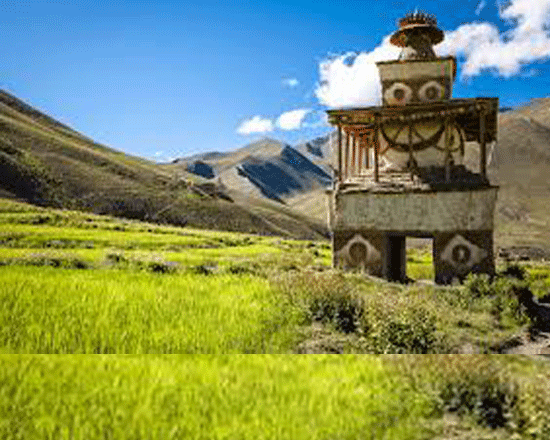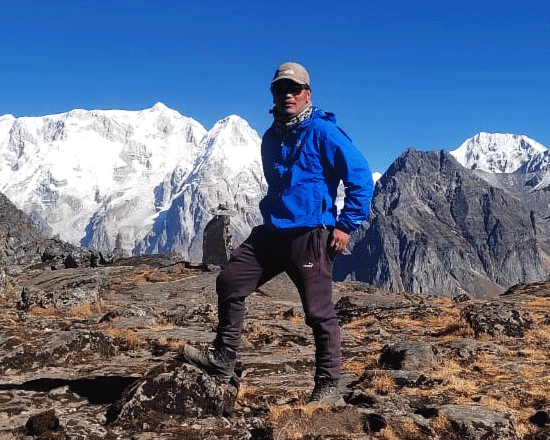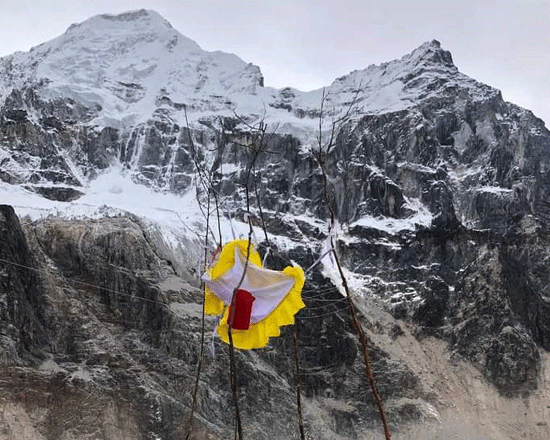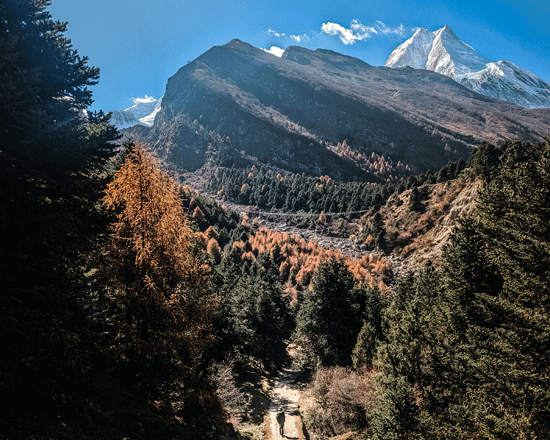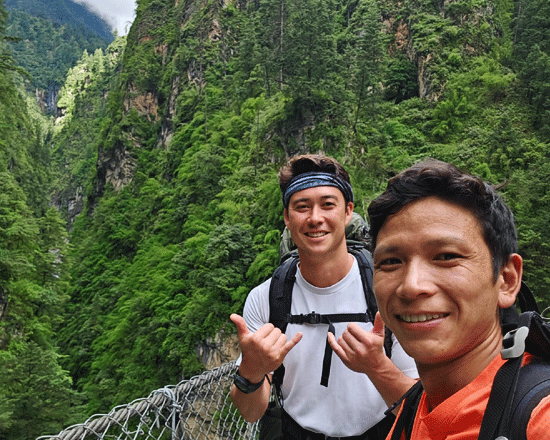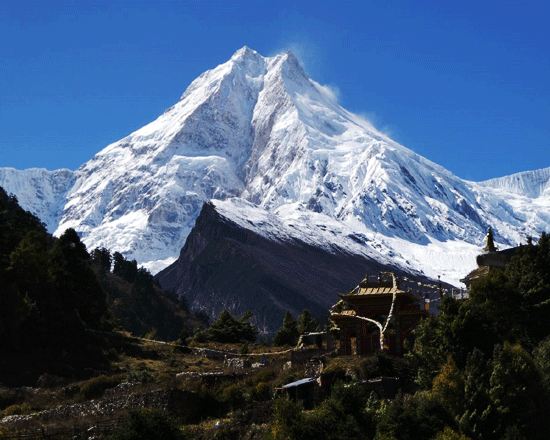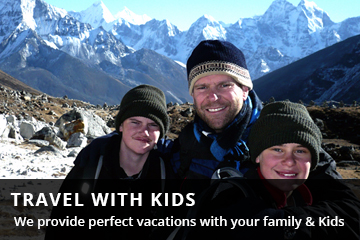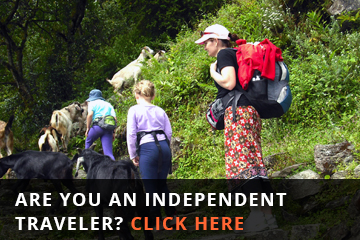Manaslu circuit trek 14 days
Manaslu circuit trek 14 days
Wilderness TrekkingTrip Facts
Since the terrain can be hard and the days long, hikers on these treks should be in good physical condition and have some previous mountain walking experience. Steep climbing may be involved, although it is never necessary to use ropes. Treks at this level can he arranged for periods of 16 to 21 days. Typically, a gradual ascent through a green river valley will lead you up to a number of high passes, where you will reach the altitude of 5416m. Often times, you will get a close insight into the Tibetan culture. Participants should expect to trek above 5416m/17872ft.
100%
Overview
Manaslu Circuit Trek 14 days Package Itinerary
Quality of Service
Choosing the Nepal Wilderness Trekking Team ensures that trekkers receive top-notch service throughout their journey. Our seasoned male/Female guides possess extensive knowledge of the terrain, culture, Mountain, and history of the Gorkha region. They handle any situation, ensuring the safety and comfort of your trek. Our Guide and Porter teams are dedicated to providing a memorable experience with personalized care and attention to detail, we offer. From assisting with acclimatization to sharing insights about local customs, our guides enhance the trekking experience.
Safety and Security
Safety is a paramount concern on the Manaslu 14-day Trek. The Nepal Wilderness Trekking Team takes every precaution to ensure, our trekkers are well-prepared and secure. Our guides are well-equipped with the necessary skills to manage altitude sickness and other potential risks. We conduct thorough briefings before the Manaslu Circuit trek, providing information on what to expect and how to prepare. Additionally, we maintain close communication with local authorities and health facilities, ready to respond promptly to some emergencies.
Environmental and Social Responsibility
Cultural Immersion and Community Engagement
The Manaslu Circuit Trek with the Nepal Wilderness Trekking Team offers exceptional value for money. The comprehensive package includes guided services, accommodation, meals, permits, and transportation, ensuring that trekkers have everything they need for a successful journey. Our transparent pricing and commitment to quality service make the trek a worthwhile investment. Trekkers can begin on this adventure knowing that they are getting the best possible experience at a fair and reasonable cost. Moreover, if the trekkers wished for the 2 passes trek we have well design the Manaslu Annapurna circuit trek for more adventurous enthusiast. These trek outbreak the boundary of Manaslu and Annapurna regions leading to capture the tremendous views of both the round trek.
Exploring the Hidden Valley
A side trip from Sama Village and Samdo Village is Pungyen Gompa for wonder-inspiring views of Manaslu Mountain. Pungyen Gompa stands as a testament to the enduring spiritual and cultural heritage of the Manaslu Valley. Its remote and tranquil setting, combined with its historical and religious significance, makes it a cherished destination for both trekkers and pilgrims. And visit the Manaslu Base Camp and trek to the Tibetan border from Samdo Village for beautiful scenery. These additional excursions offer deeper exploration and enrich your journey and encounters with local traditions and landscapes. The importance of side trips during the Manaslu circuit trek is highlighted below.
Key Details of Pungyen Gompa
- Historical Significance:
-
The local Tibetan-Buddhist community holds Pungyen Gompa in high spiritual regard. The monastery’s history deeply roots itself in the cultural and religious traditions of the region. The word “Pungyen” derives from Mount Manaslu’s local name, “Pungyen Himal,” reflecting the close connection between the monastery and the sacred mountain.
-
- Location and Accessibility:
- The monastery is situated in a remote and serene area, accessible from the village of Sama Gaun. This village is a popular stop on the Manaslu Circuit Trek.
- The trek to Pungyen Gompa takes about 3-4 hours. It offers trekkers a chance to explore the high-altitude terrain and enjoy panoramic views.
- Architecture and Structure:
- Pungyen Gompa features traditional Tibetan-Buddhist architecture, with prayer flags fluttering in the wind, prayer wheels, and intricate carvings and paintings.
- The monastery complex includes a main prayer hall, smaller shrines, and living quarters for monks. The interiors are decorated with thangkas (Buddhist paintings), statues of deities, and religious artifacts.
- Religious and Cultural Practices:
- The monastery serves as a center for religious ceremonies, meditation, and learning for the local community. Monks and nuns residing at the monastery engage in daily prayers, rituals, and study of Buddhist scriptures.
- Pungyen Gompa is a site of pilgrimage for devotees who come to seek blessings and spiritual relief.
- Natural Beauty and Scenic Views:
- The location of Pungyen Gompa offers breathtaking views of the Manaslu massif and surrounding peaks.
- The serene environment and the stunning snow-capped mountains make it a perfect spot for meditation and reflection.
- Significance for Trekkers:
- For trekkers on the Manaslu Circuit, visiting Pungyen Gompa provides an enriching cultural experience and a deeper understanding of the local Tibetan-Buddhist traditions.
-
Trekkers often regard the side trip to the monastery as a highlight, enjoying a peaceful retreat and connecting with the region’s spiritual essence
Manaslu base camp
Manaslu Base Camp, at an elevation of 4,800 meters, offers trekkers and mountaineers a unique and enriching experience. Glaciers and icefalls surround the Manaslu base camp, creating a dramatic and awe-inspiring landscape. The trek provides close-up views of the massive and impressive Manaslu Glacier descending from Mount Manaslu. Mountaineers aiming to summit Mount Manaslu start from Manaslu Base Camp. The climb, known for its technical challenges, requires a high level of skill and preparation.
Best Time for Manaslu Circuit Trek
The weather varies significantly based on the season:
- Spring (March-June):
- Best time for trekking as it is considered the second-best season in Nepal.
- Temperatures range from 10°C to 20°C in lower regions with clear skies. But as you ascend higher altitude above 3000m, it feels colder during the night and in the morning. The temperature can be sub-zero at the beginning of the season at the higher passes.
- The blooming rhododendrons and the greenery landscape remark the joys of the journey with picturesque views.
- Autumn (September-Mid December):
- Another popular season due to stable weather.
- Temperatures are similar to spring.
- Mesmerizing clear views of mountains.
Detail Itinerary
- Day 1: Drive from Kathmandu to Machha Khola (930m) - 8-9 hours
Your journey begins with a scenic drive from Kathmandu to Machha Khola via Arughat. Covering a distance of approximately 141 km, the drive takes you through terraced fields, traditional villages, and winding rivers. Upon arrival in Machha Khola, settle into a lodge and enjoy the peaceful surroundings. - Day 2: Trek from Machha Khola to Jagat (1,410m) - 6-7 hours
Start your trek with a gentle walk through lush forests and charming villages. The trail follows the Budi Gandaki River, passing natural hot springs where you can relax. As you ascend, you’ll encounter Gurung villages with traditional stone houses. Arriving in Jagat, an entry checkpoint for the restricted Manaslu region, you’ll experience a mix of ethnic cultures and scenic backdrops. - Day 3: Trek from Jagat to Deng (1,860m) - 6-7 hours
Continue trekking through forests and crossing multiple suspension bridges over the Budi Gandaki River. Along the way, you’ll pass charming settlements and cascading waterfalls. Deng is a small village where you’ll notice strong Tibetan Buddhist influences. - Day 4: Trek from Deng to Namrung (2,660m) - 6-7 hours
The trail ascends through rhododendron forests, with views of beautiful waterfalls. As you gain altitude, you’ll enter a region deeply influenced by Tibetan culture. Namrung is a picturesque village offering stunning views of Manaslu and other peaks. - Day 5: Trek from Namrung to Syala (3,500m) - 5-6 hours
Today’s trek offers breathtaking panoramic views of Manaslu and surrounding peaks. Syala is a scenic stop with a backdrop of snowy mountains, offering a peaceful atmosphere for rest. - Day 6: Trek from Syala to Sama Gaon (3,530m) - 3-4 hours
A relatively short trek brings you to Sama Gaon, one of the largest villages on the Manaslu Circuit. Visit Ribung Gompa and enjoy the stunning mountain backdrop. This village serves as a base for acclimatization before heading to higher altitudes. - Day 7: Acclimatization Day in Sama Gaon – Manaslu Base Camp Visit (4,800m) - 7-8 hours
Spend the day exploring with an optional hike to Manaslu Base Camp, offering breathtaking views of the Manaslu Glacier and surrounding peaks. This challenging hike is rewarding and helps with acclimatization. - Day 8: Trek from Sama Gaon to Samdo (3,875m) - 3-4 hours
The trek continues closer to the Tibetan border. You’ll notice a change in landscape and culture, with Tibetan-influenced settlements. Samdo is a small but historically significant village. - Day 9: Trek from Samdo to Dharamsala (4,460m) - 4-5 hours
A short but significant trek leads to Dharamsala, the final stop before crossing the Larke Pass. The area is barren yet offers stunning mountain views. - Day 10: Cross Larke Pass (5,106m) & Trek to Bimthang (3,590m) - 8-9 hours
One of the most challenging yet rewarding days of the trek. The ascent to Larke Pass offers unparalleled mountain views before a long descent to Bimthang through glacial landscapes. - Day 11: Trek from Bimthang to Tilche (2,300m) - 5-6 hours
Descend through lush rhododendron forests and picturesque villages. Tilche is a charming village where you can experience traditional mountain life. - Day 12: Trek from Tilche to Tal (1,700m) - 5-6 hours
The trek continues with beautiful scenery and river crossings before reaching Tal, a village situated beside a cascading waterfall. - Day 13: Drive from Tal to Besisahar
A scenic local bus or jeep ride takes you from Tal to Besisahar, marking the completion of the trekking portion. Enjoy the final views of the Annapurna region. - Day 14: Drive from Besisahar to Kathmandu
The final drive back to Kathmandu (175 km) offers stunning views of Nepal’s countryside. Upon arrival, celebrate your successful trek and explore the capital’s rich cultural heritage.
Cost Included
- Meals: Three delicious meals per day (breakfast, lunch, and dinner) chosen from the menu, featuring Italian, Chinese, Nepali, Indian, and various European cuisines.
- Accommodation: Clean and comfortable lodge accommodations throughout the trek.
- Guide: One experienced, well-trained, and government-licensed trekking guide fluent in English, friendly, knowledgeable, and specialized in the Manaslu region.
- Porter: One porter for every two to three participants. (Note: Additional cost applies for solo trekkers requiring a porter.)
- Guide & Porter Services: Includes accommodation, salary, insurance, transportation, and necessary trekking equipment.
- Transportation: Shared jeep from Kathmandu to Machha Khola, and from Dharapani/Tal to Besisahar. Local bus from Besisahar to Kathmandu.
- Permits: Manaslu Restricted Area Permit, Annapurna Conservation Area Project (ACAP) permit, and Manaslu Conservation Area Project (MCAP) permit.
- Medical Support: First aid medical kit available during the trek.
- Trekking Gear: Sleeping bag and down jacket provided if you do not have your own.
- Certificate: Complimentary Trekking Certificate of Completion.
Cost Excluded
- Accommodation in Kathmandu.
- Beverages & Drinks: Soft and hard drinks, including coke, beer, Fanta, mineral water, hot showers, and desserts.
- Personal Insurance: Travel, medical, and emergency rescue insurance.
- Rescue Operation Charges: Any costs incurred for emergency evacuations.
- Gratuities: Tips for guides and porters.
- Unforeseen Costs: Additional expenses due to unforeseen circumstances such as landslides, extreme weather conditions, itinerary changes for safety reasons, illness, changes in government policies, strikes, or other situations beyond management’s control.
- Any other expenses not listed under "Included Services."
The equipment you'll need for the Manaslu Circuit Trek in Nepal will depend on the time of year you plan to go, the weather conditions, and your personal preferences. However, there's a general equipment list to consider:
Clothing:
- Lightweight and moisture-wicking base layers
- Insulating layers (fleece jacket, down jacket, or synthetic insulated jacket)
- Waterproof and windproof outer shell jacket
- Waterproof and breathable pants (Gore-Tex or similar)
- Trekking pants (convertible or non-convertible)
- Long-sleeve trekking shirts
- T-shirts
- Thermal underwear (for colder months)
- Warm hat or beanie
- Sun hat or cap
- Gloves or mittens
- Buff or neck gaiter
- Socks (moisture-wicking and warm)
- Underwear
Footwear:
- Sturdy and comfortable hiking boots
- Gaiters (optional but useful for keeping debris out of your boots)
Backpack and Accessories:
- Trekking backpack (40-60 liters)
- Daypack (for daily essentials during the trek)
- Rain cover for your backpack
- Dry bags or stuff sacks (to keep your gear dry)
- Trekking poles (optional but recommended)
Sleeping Gear:
- Sleeping bag suitable for cold temperatures (0°F/-18°C or lower)
- Sleeping bag liner (for added warmth and hygiene)
- Sleeping pad or insulated mattress
Camping Gear (if teahouses are unavailable or crowded):
- Lightweight tent
- Cooking stove and utensils
- Food and supplies
Accessories:
- Sunglasses with UV protection
- Headlamp or flashlight with extra batteries
- Water purification tablets or a filter
- Water bottles or a hydration system
- Trekking map and compass or GPS device
- First-aid kit with essential medications
- Toiletries (toothbrush, toothpaste, soap, wet wipes, toilet paper)
- Sunscreen and lip balm with SPF
- Insect repellent
- Pocket knife or multi-tool
- Camera and spare batteries
- Travel wallet or money belt
- Personal identification and permits (passport, visa, TIMS card, Manaslu Restricted Area Permit)
- Trekking insurance (including evacuation coverage)
Optional:
- Reading materials or entertainment (book, e-reader, or playing cards)
- Snacks and energy bars
- Trekking poles (helpful on steep and uneven terrain)
- Earplugs (useful in teahouses if you're a light sleeper)
Remember that it's essential to pack efficiently and keep your backpack as light as possible while ensuring you have all the necessary gear to stay safe and comfortable during the trek. Additionally, it's a good idea to check the weather forecast for the specific time of your trek and adjust your clothing and gear accordingly. Always consult with the Nepal wilderness trekking agency for the most up-to-date information on what to bring for the Manaslu Circuit Trek.
| Trip Dates | Trip Price | Confirmed Pax | Trip Status | |
|---|---|---|---|---|
| April 15, 2025 | US$ 1000 | Join a Group | Book Now | |
| April 18, 2025 | US$ 1000 | Join a Group | Book Now | |
| April 21, 2025 | US$ 1000 | Join a Group | Book Now | |
| April 25, 2025 | US$ 1000 | Join a Group | Book Now | |
| April 28, 2025 | US$ 1000 | Join a Group | Book Now | |
| April 30, 2025 | US$ 1000 | Join a Group | Book Now | |
| May 3, 2025 | US$ 1000 | Join a Group | Book Now | |
| May 7, 2025 | US$ 1000 | Join a Group | Book Now | |
| May 11, 2025 | US$ 1000 | Join a Group | Book Now | |
| May 15, 2025 | US$ 1000 | Join a Group | Book Now | |
| May 18, 2025 | US$ 1000 | Join a Group | Book Now | |
| May 21, 2025 | US$ 1000 | Join a Group | Book Now | |
| May 25, 2025 | US$ 1000 | Join a Group | Book Now | |
| May 28, 2025 | US$ 1000 | Join a Group | Book Now | |
| May 31, 2025 | US$ 1000 | Join a Group | Book Now | |
| June 3, 2025 | US$ 1000 | Join a Group | Book Now | |
| June 6, 2025 | US$ 1000 | Join a Group | Book Now | |
| June 9, 2025 | US$ 1000 | Join a Group | Book Now | |
| June 12, 2025 | US$ 1000 | Join a Group | Book Now | |
| June 15, 2025 | US$ 1000 | Join a Group | Book Now | |
| June 18, 2025 | US$ 1000 | Join a Group | Book Now | |
| June 21, 2025 | US$ 1000 | Join a Group | Book Now | |
| June 24, 2025 | US$ 1000 | Join a Group | Book Now | |
| June 28, 2025 | US$ 1000 | Join a Group | Book Now | |
| July 1, 2025 | US$ 1000 | Join a Group | Book Now | |
| July 6, 2025 | US$ 1000 | Join a Group | Book Now | |
| July 9, 2025 | US$ 1000 | Join a Group | Book Now | |
| July 12, 2025 | US$ 1000 | Join a Group | Book Now | |
| July 15, 2025 | US$ 1000 | Join a Group | Book Now | |
| July 18, 2025 | US$ 1000 | Join a Group | Book Now | |
| July 21, 2025 | US$ 1000 | Join a Group | Book Now | |
| July 25, 2025 | US$ 1000 | Join a Group | Book Now | |
| July 31, 2025 | US$ 1000 | Join a Group | Book Now | |
| August 5, 2025 | US$ 1000 | Join a Group | Book Now | |
| August 10, 2025 | US$ 1000 | Join a Group | Book Now | |
| August 15, 2025 | US$ 1000 | Join a Group | Book Now | |
| August 20, 2025 | US$ 1000 | Join a Group | Book Now | |
| August 25, 2025 | US$ 1000 | Join a Group | Book Now | |
| August 30, 2025 | US$ 1000 | Join a Group | Book Now | |
| September 5, 2025 | US$ 1000 | Join a Group | Book Now | |
| September 10, 2025 | US$ 1000 | Join a Group | Book Now | |
| September 15, 2025 | US$ 1000 | Join a Group | Book Now | |
| September 20, 2025 | US$ 1000 | Join a Group | Book Now | |
| September 25, 2025 | US$ 1000 | Join a Group | Book Now | |
| September 30, 2025 | US$ 1000 | Join a Group | Book Now | |
| October 3, 2025 | US$ 1000 | Join a Group | Book Now | |
| October 6, 2025 | US$ 1000 | Join a Group | Book Now | |
| October 10, 2025 | US$ 1000 | Join a Group | Book Now | |
| October 14, 2025 | US$ 1000 | Join a Group | Book Now | |
| October 18, 2025 | US$ 1000 | Join a Group | Book Now | |
| October 22, 2025 | US$ 1000 | Join a Group | Book Now | |
| October 26, 2025 | US$ 1000 | Join a Group | Book Now | |
| October 30, 2025 | US$ 1000 | 2 | Join a Group | Book Now |
| November 5, 2025 | US$ 1000 | Join a Group | Book Now | |
| November 10, 2025 | US$ 1000 | Join a Group | Book Now | |
| November 15, 2025 | US$ 1000 | Join a Group | Book Now | |
| November 20, 2025 | US$ 1000 | Join a Group | Book Now | |
| November 25, 2025 | US$ 1000 | Join a Group | Book Now | |
| December 7, 2025 | US$ 1000 | Join a Group | Book Now | |
| December 14, 2025 | US$ 1000 | 2 | Join a Group | Book Now |
| December 21, 2025 | US$ 1000 | Join a Group | Book Now | |
| December 28, 2025 | US$ 1000 | Join a Group | Book Now | |
| December 30, 2025 | US$ 1000 | Join a Group | Book Now |
Trip Map
